Related Research Articles

The University of Rochester is a private research university in Rochester, New York, United States. It enrolls approximately 6,800 undergraduates and 5,000 graduate students. It was founded in 1850 and moved into its current campus, next to the Genesee River in 1955. With approximately 30,000 full-time employees, the university is the largest private employer in Upstate New York and the 7th largest in all of New York State.

George Eastman was an American entrepreneur who founded the Eastman Kodak Company and helped to bring the photographic use of roll film into the mainstream. After a decade of experiments in photography, he patented and sold a roll film camera, making amateur photography accessible to the general public for the first time. Working as the treasurer and later president of Kodak, he oversaw the expansion of the company and the film industry.

Howard Harold Hanson was an American composer, conductor, educator, music theorist, and champion of American classical music. As director for 40 years of the Eastman School of Music, he built a high-quality school and provided opportunities for commissioning and performing American music. In 1944, he won a Pulitzer Prize for his Symphony No. 4, and received numerous other awards including the George Foster Peabody Award for Outstanding Entertainment in Music in 1946.

Cass Robert Sunstein is an American legal scholar known for his work in constitutional law, administrative law, environmental law, and behavioral economics. He is also The New York Times best-selling author of The World According to Star Wars (2016) and Nudge (2008). He was the administrator of the White House Office of Information and Regulatory Affairs in the Obama administration from 2009 to 2012.

Martin Emil Marty is an American Lutheran religious scholar who has written extensively on religion in the United States.
Thomas H. Jackson is an American legal scholar who was the ninth president of the University of Rochester, preceded by Dennis O'Brien. Jackson held the position of president from 1994 until he formally stepped down on June 30, 2005, and was succeeded by Joel Seligman. Jackson's tenure was marked by the controversial "Renaissance Plan", which cut undergraduate enrollment while making admission more selective, and cut several graduate programs. He holds the position of Distinguished University Professor and has faculty appointments in the department of political science and in the William E. Simon Graduate School of Business Administration at the University of Rochester. Jackson is known as one of the nation's foremost experts on bankruptcy law.
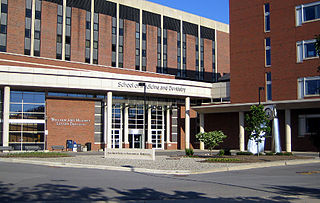
The University of Rochester Medical Center (URMC), now known as UR Medicine, is located in Rochester, New York, is one of the main campuses of the University of Rochester and comprises the university's primary medical education, research and patient care facilities.
Jack William Fuller was an American journalist who spent nearly forty years working in newspapers and was the author of seven novels and two books on journalism.
Donald Hunsberger was an American conductor and arranger. He served as the conductor of the Eastman Wind Ensemble from 1965 until 2002. He also held the position of Professor of conducting at the Eastman School of Music. Generally regarded as a key contributor to the rise of the modern wind ensemble in the twentieth century, Hunsberger's notable contributions include conducting, recording, and arranging music for winds.
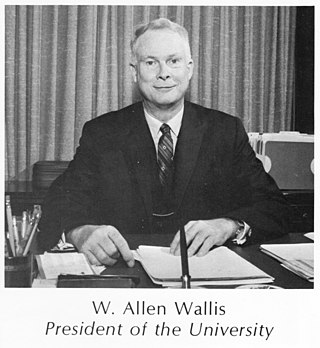
Wilson Allen Wallis was an American economist and statistician who served as president of the University of Rochester. He is best known for the Kruskal–Wallis one-way analysis of variance, which is named after him and William Kruskal.

Carleton Bartlett Gibson was a 19th– and 20th-century American industrial educator, and university president. He notably served as the third president of Jacksonville State Normal School from 1886 until 1892; followed by serving as the first president of the Rochester Athenæum and Mechanics Institute from 1910 until 1916.
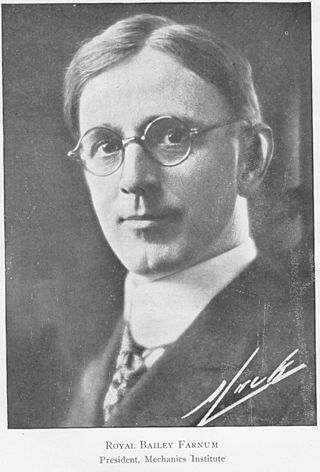
Royal Bailey Farnum was an American art educator who served in administrative roles in various public and private educational institutions in Massachusetts, New York, Ohio, and Rhode Island during the first half of the 20th century.
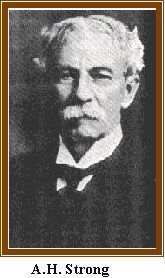
Augustus Hopkins Strong was a Baptist minister and theologian who lived in the United States during the late 19th and early 20th centuries. His most influential book, Systematic Theology, proved to be a mainstay of Baptist theological education.
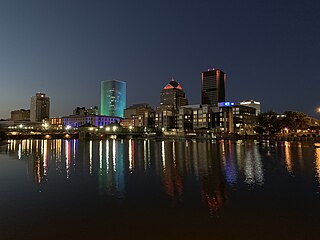
The Rochester metropolitan area, denoted the Rochester, NY Metropolitan Statistical Area by the United States Census Bureau, is a metropolitan statistical area consisting of six counties in Western New York, anchored by the city of Rochester, New York. Many counties are mainly rural with various farming communities scattered throughout the metropolitan area. As of the 2020 census, the MSA had a population of 1,090,135. The Rochester MSA is the 3rd largest MSA in New York state.
Reginald Gibbons is an American poet, fiction writer, translator, literary critic. He is the Frances Hooper Professor of Arts and Humanities, Emeritus, at Northwestern University. Gibbons has published numerous books, including 11 volumes of poems, translations of poetry from ancient Greek, Spanish, and co-translations from Russian. He has published short stories, essays, reviews and art in journals and magazines, has held Guggenheim Foundation and NEA fellowships in poetry and a research fellowship from the Center for Hellenic Studies in Washington D.C. For his novel, Sweetbitter, he won the Anisfield-Wolf Book Award; for his book of poems, Maybe It Was So, he won the Carl Sandburg Prize. He has won the Folger Shakespeare Library's O. B. Hardison, Jr. Poetry Prize, and other honors, among them the inclusion of his work in Best American Poetry and Pushcart Prize anthologies. His book Creatures of a Day was a Finalist for the 2008 National Book Award for poetry. His other poetry books include Sparrow: New and Selected Poems, Last Lake and Renditions, his eleventh book of poems. His has also published two collections of very short fiction, Five Pears or Peaches and An Orchard in the Street.
Robert Luther Gauldin Jr. is an American composer. He is professor emeritus of Music Theory at the Eastman School of Music.
Robert Eisner was an American author and William R. Kenan professor of economics at Northwestern University. He was recognized throughout the United States for his expertise and knowledge of macroeconomics and the economics of business cycles. He was a regular contributor to the Wall Street Journal, The New York Times, Chicago Tribune, and The Los Angeles Times, primarily covering national economic policy and reform.
M. Craig Barnes is an American Presbyterian minister and professor who served as president of Princeton Theological Seminary.

John Edward Corbally Jr. was an American academic administrator and university president. Corbally led Syracuse University from 1969 to 1971 before becoming president of the University of Illinois system from 1971 to 1979. He held roles in numerous non-profit organizations, including a decade as the first president of the John D. and Catherine T. MacArthur Foundation.
Jessie Ann Owens is an American author and educator. She is a professor of music at University of California, Davis and a former dean of the Division of Humanities, Arts and Cultural Studies. Owens is a recognized musicologist of Renaissance music.
References
- ↑ "Dennis O'Brien". The Room at the Top: UR Presidents 1853–2005. Department of Rare Books, Special Collections & Preservation, University of Rochester. Archived from the original on February 16, 2009. Retrieved December 14, 2008.
- ↑ "O'Brien Leaves Mixed Legacy", The Democrat and Chronicle, Rochester, New York, p. 1A, May 16, 1994
- ↑ "The Cold Question Is Whether UR Should Change Name", The Democrat and Chronicle, Rochester, New York, p. 1A, February 16, 1986
- ↑ Daniels, Lee A. (September 2, 1987), "Rochester U. President Troubled by Fuji Case", The New York Times, New York, New York , retrieved November 8, 2013
- ↑ "Rochester U. Votes to End Its Ties to South Africa", The New York Times, New York, New York, October 11, 1987, retrieved November 9, 2013